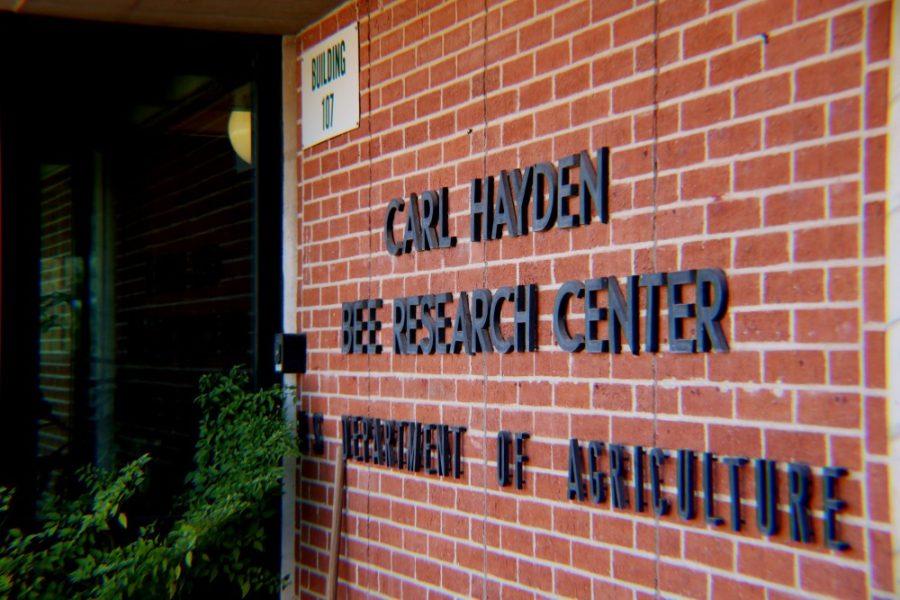A recent study led by a UA graduate student is focusing on how a decrease in pollen availability is negatively affecting the gut microbes of honeybees. These microbes can either benefit or harm the bee, depending on the insect’s diet.
The research began with beekeepers, who typically feed their bees a pollen substitute using protein and sugar water. Patrick Maes, a UA graduate student and the first author of the study, wanted to find a way to improve these pollen substitutes.
“My research focus was going to be on how the honeybee’s gut microbiome confers benefits to its host,” Maes said. “I wanted to know if we could harness the natural powers of the honeybees as a way to improve pollen substitutes.”
To do this, Maes and his team had to determine how different diets affect the health and prosperity of honeybees.
Maes chose two 500-bee apiaries—bee yards—based on how available naturally occurring pollen was to the bees housed inside them.
Foragers of the colony naturally collected pollen and pollen substitutes, which was then packed into the comb by fellow bees. From there, the food cache was aged using a treatment of controlled humidity and temperature for either 14 or 21 days.
“We then used cage studies to feed newly emerged bees one of the treatments,” Maes said. All in all, bees were fed one of four diets: newer or aged pollen and newer or aged pollen substitute.
To determine differences, researchers measured the physical and developmental variables that could be affected. These included “mortality, flight muscle development, nurse gland development and consumption,” Maes said. Researchers also performed genetic research on the four parts of a honeybee’s digestion system—mouth parts, nurse guts, ilieum and hindgut—which enabled them to see what kind of bacteria developed within.
RELATED: The king of sting Justin Schmidt gets stung for science
Prior studies done by Maes and the other researchers were also integrated into the experiment. For example, the team was already aware that honeybees prefer freshly stored pollen and that colonies begin to show stress after a certain period of time. This is called “colony dwindling,” a natural phenomenon noted by beekeepers. This inspired the idea of using “fresh” and “aged” diets in the experiment.
Through this research, the team discovered a connection between diet and bacteria in honeybees. Certain diets created an environment that allowed for particular types of bacteria, some negative and some positive. The type of bacteria found in the stomach correlated with the effects caused by the bees’ diets. “Our results document the first link between honeybee diet, host deficiencies and bacterial community structure,” Maes said.
When a bee was fed a fresh diet, it experienced much more positive effects. These bees were documented as having a lower mortality rate, grew more efficiently and suffered less from dangerous pathogens. Bees fed an aged diet had higher levels of the negative gut pathogen Frischella perrara, which causes scab formation in the stomach of bees. They took longer to develop a nurse gland—used to rear young—and to develop the muscles needed for flying.
RELATED: UA researchers work to get FDA approval of new coral snake anti-venom
Bees who consumed the aged diet had to eat a great deal more, despite suffering from negative consequences. “The increased consumption effect could be due to the lack of assimilated as opposed to available nutrition,” Maes said. In an attempt to obtain necessary nutrients to both survive and feed their larva, the bees ate a larger amount of the aged diet.
The microbial community within the bee’s stomach was altered no matter what type of diet they were fed, but the results were drastically different. An older diet clearly led to more negative bacteria, including species of Nosema, a feared bacterium which causes dehydration and has been linked to colonies collapsing in the United States. Fresh pollen, a dwindling resource, created an environment suitable for positive, useful bacteria in the bee’s stomach.
In a decade of decreasing bee populations around the world, this research may play a useful role in protecting the insects in the future.
Follow Nicole Morin on Twitter.









